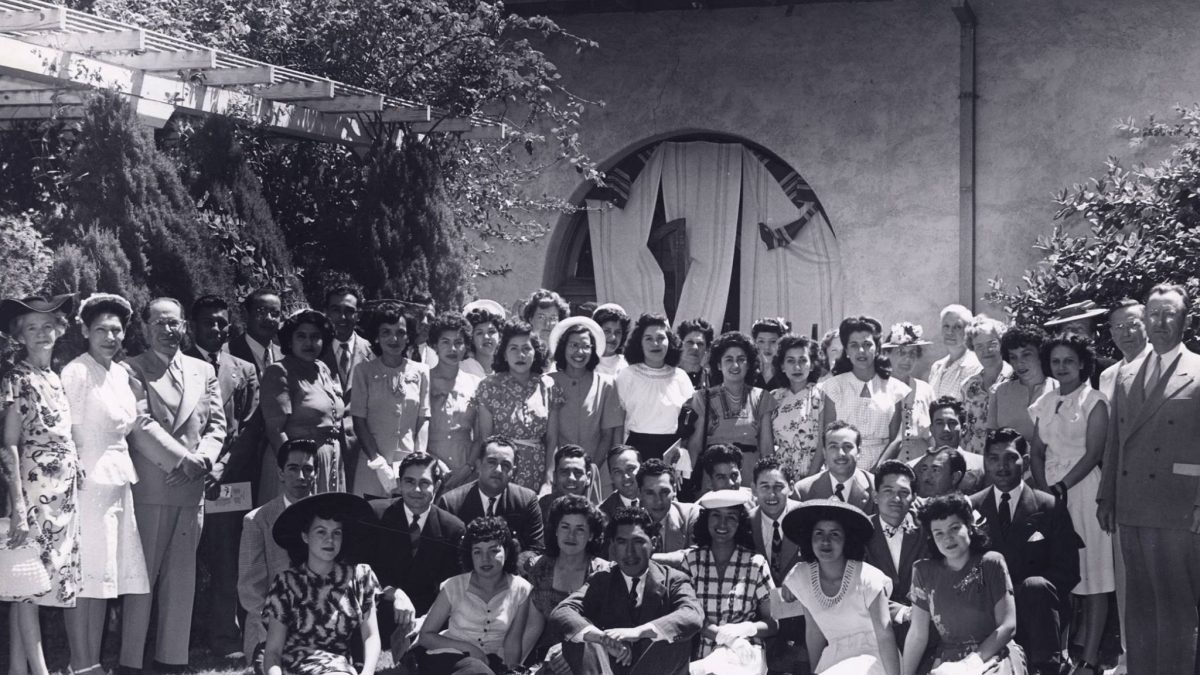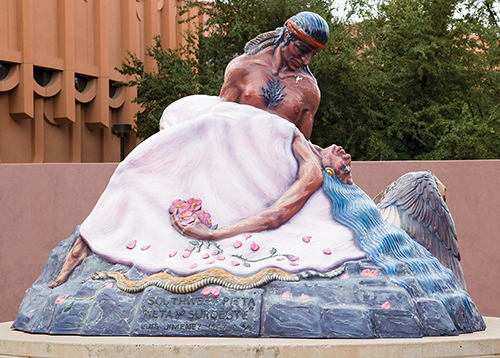Before the entrance to Hayden Library was underground, it was flanked by a growth of shrubs. During the 1970s and '80s, Latino students began congregating in the area, where they hosted civil-rights rallies, raised funds for the Red Cross or simply shared a conversation before class. Over time, it became known as “the Chicano Bush.”
Today, there is no evidence of the Chicano Bush on what is now Cady Mall, but Christine Marin, a graduate student at ASU in the 1980s, remembers it clearly. Marin went on to earn her PhD and is now an ASU emeritus professor. If anyone can tell the story of the hidden gems of Latino history on the Tempe campus, it’s her.
On Thursday, Oct. 13, she’ll do just that, as she guides a walking tour stopping at various points of historic significance as Hispanic Heritage Month comes to a close. The tour will take place from 4 to 6 p.m. and will begin at the Interdisciplinary B building, room 164, with the School of Transborder Studies' historic map collection.
Hosted by the Recovering ASU Latin@ History Working Group, the tour is free and open to the public.
“Throughout the tour, we’re going to see the many contributions and vibrant history of Latino students here at ASU,” said Marin.
This is the first year ASU has offered such a tour. The idea came to ASU CAMP Scholars program director Seline Szkupinski Quiroga as she was guiding an Access ASU tour for children of migrant workers for the School of Transborder Studies. The lightbulb went off when she realized, “These kids aren’t seeing themselves in this tour,” she said. “I felt we needed a walking tour that highlighted Latino culture.”
"Southwest Pieta" by Luis Jimenez
The resulting tour includes such spots as the former site of the aforementioned Chicano Bush; the 10-foot fiberglass statue “Southwest Pieta,” by Luis Jimenez; “The Old Church” on College Avenue and University Drive; and the MEChA mural at the Memorial Union.
The theme of Southwest Pieta, involving a grieving man and a dead woman, is taken from Mexican mythology.
“It’s a Romeo-and-Juliet story of two lovers who are turned into volcanoes by the gods,” according to a statement by Jimenez, who passed away in 2006. “It is the most common image along the low-rider vans and on restaurant and barrio murals.”
The Old Church, also known as St. Mary’s, is now the home of the All Saints Catholic Newman Center. Back in 1903 when it was built using real adobe bricks, it was Tempe’s first Catholic church and a place for the local Latino community who worked at Charles Trumbull Hayden’s flour mill or the railroad to gather and worship.
The MEChA mural in the east entry of the Memorial Union dates back to the 1970s, shortly after the Chicano Civil Rights Movement spurred student activism and the creation of the Mexican American Student Organization (MASO) in 1968. Marin was one of the original founders.
By 1970, MASO became known as MEChAMEChA stands for Movimiento Estudiantil Chicanx de Aztlan (Chicanx Student Movement of Aztlan). Aztlan is the legendary ancestral home of the Aztecs, and "Chicanx" is a gender-neutral form of Chicano/Chicana.. The student group painted the mural to depict more than 500 years of Mexican/Chicano history, featuring the Classic Era of Indian Mexico, the Aztec Stone of the Fifth Sun and iconic figures such as Emiliano Zapata and Cesar Chavez. It is said that when Cesar Chavez made his first visit to the ASU campus, he met with the MEChA students and participated in the painting of the mural.
As the tour demonstrates, Latino history and culture can be seen everywhere at ASU; one just has to know where to look.
The Oct. 13 tour will come to an end with a reception on the second floor of Hayden Library. There, attendees can learn about the Chicano Research Collection, located on the fourth floor of the library in the Luhrs Reading Room.
For more information, contact Theresa Avila at theresa.avila1@asu.edu or Seline Szupinski-Quiroga at selinesq@asu.edu. For more information about the Chicano Research Collection, contact Nancy Godoy at nancy.godoy@asu.edu.
Top photo courtesy of the Chicano Research Collection, depicting the first ASU Mexican-American Student Organization, Los Conquistadores, circa 1940s.
More Arts, humanities and education

ASU’s Humanities Institute announces 2024 book award winner
Arizona State University’s Humanities Institute (HI) has announced “The Long Land War: The Global Struggle for Occupancy Rights” (Yale University Press, 2022) by Jo Guldi as the 2024…

Retired admiral who spent decades in public service pursuing a degree in social work at ASU
Editor’s note: This story is part of coverage of ASU’s annual Salute to Service.Cari Thomas wore the uniform of the U.S. Coast Guard for 36 years, protecting and saving lives, serving on ships and…

Finding strength in tradition
Growing up in urban environments presents unique struggles for American Indian families. In these crowded and hectic spaces, cultural traditions can feel distant, and long-held community ties may be…

